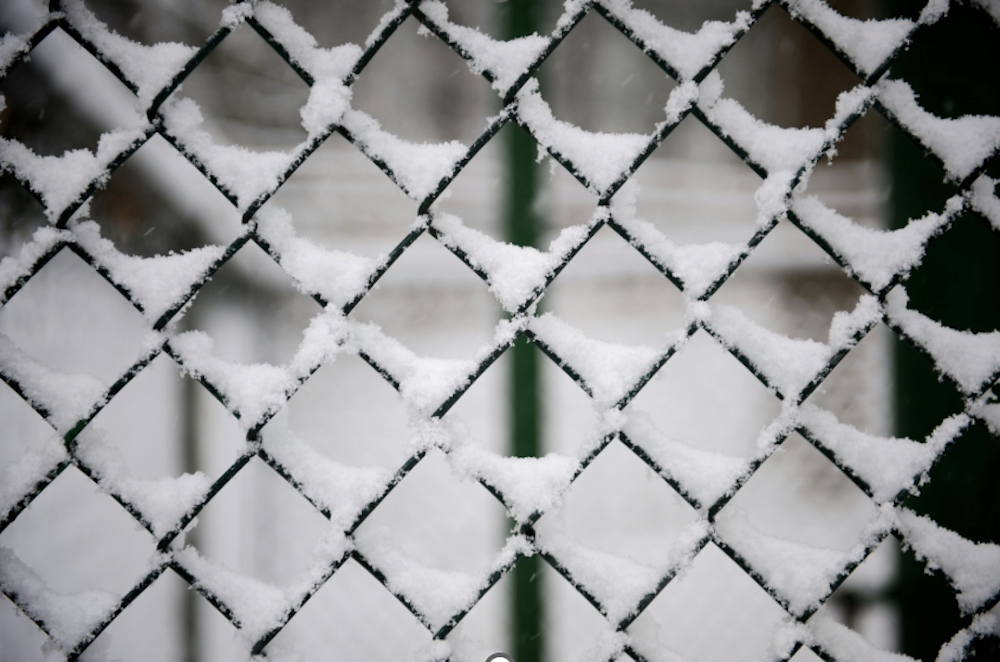
As winter approaches, ensuring your fence is ready to withstand the harsh conditions is crucial. Cold temperatures, snow, ice, and high winds can affect wood, vinyl, and metal fences alike. By winterizing your fence, you can extend its lifespan, reduce the need for costly repairs, and keep it looking good through the cold months. Here’s a step-by-step guide to winterizing your fences and protecting them from the elements.
1. Inspect for Damage and Make Necessary Repairs
Before winter fully sets in, inspect your fence for any visible damage.
Look for:
- Loose posts: If posts are leaning or unstable, they need to be reset or reinforced. Ice and snow can make them even more vulnerable.
- Rotting or cracked wood: Check for signs of wood decay, especially at the base where water might pool. Replace damaged boards or sections.
- Rust on metal fences: If you have a wrought iron or steel fence, check for rust. Rust can spread quickly in moist conditions, so treating and repairing it before winter is essential.
- Sagging gates: Ensure your gates open and close properly. If they’re sagging, they may become worse in the snow or wind.
Repairing these issues before winter ensures that your fence will stand up to the winter weather without further deterioration.
2. Clean Your Fence
Winter weather often brings dirt, leaves, and debris, which can damage your fence over time. Cleaning your fence regularly prevents these elements from breaking down materials or causing staining.
For wood fences, scrub with a mixture of water and mild soap. Avoid using harsh chemicals that could strip the wood of its natural oils.
For vinyl fences, use a vinyl cleaner or a mixture of water and dish soap. Pressure washing can be effective here, but be cautious of using too much pressure, which can cause cracks.
For metal fences, remove any dirt or grime with a cloth and mild detergent. A metal cleaner can help treat any rust before it gets worse.
Cleaning your fence before winter helps keep it in good condition, making it easier to maintain year-round.
3. Seal and Protect Wood Fences
Wood fences are particularly susceptible to winter weather, as they absorb moisture that can cause swelling, cracking, or even rot. To protect your wood fence:
- Apply a wood sealant or stain: A high-quality sealant will protect the wood from moisture and prevent it from cracking, warping, or becoming discolored. Look for a stain or sealant that’s specifically designed for outdoor use, especially in cold climates.
- Reapply annually: Depending on the climate, you might need to apply a protective seal every year. Wood that’s exposed to harsh winters may require additional coats.
Applying sealant not only protects the wood but also keeps your fence looking its best throughout the season.
4. Trim Back Vegetation
During the winter, ice and snow accumulation can cause branches and shrubs to become heavy and place unnecessary stress on your fence. Trimming back any trees or shrubs that are close to the fence line will prevent the weight of snow and ice from causing damage. Plus, removing vegetation can help keep the fence clear from moisture that could seep into cracks or joints, leading to decay or rust.
5. Install Snow Guards and Protect Posts
Snow and ice can put considerable weight on a fence. If you live in an area that experiences heavy snowfall, consider installing snow guards or snow fences to help manage snow accumulation. These barriers prevent snow from piling up directly against your fence, which could put a strain on it.
Additionally, protecting fence posts from frost heave is important. Frost heave occurs when the ground freezes and thaws, causing posts to shift or become loose. To avoid this, make sure the posts are properly set in concrete or reinforced, and add gravel or crushed stone around the base to encourage proper drainage.
6. Consider Winterizing Your Fence’s Gate Mechanism
If your fence has a gate that’s operated electronically or manually, it’s important to winterize it as well.
- Lubricate moving parts: Apply silicone lubricant to hinges, locks, and other moving parts to keep them from freezing and getting stuck in the cold.
- Check the gate’s alignment: Ensure the gate swings properly and is free of any obstructions. Snow and ice can cause gates to freeze or become difficult to open if they are misaligned.
Proper maintenance will prevent inconvenience during the winter months and ensure smooth gate operation.
7. Monitor Your Fence Throughout the Winter
Once the winter season is in full swing, it’s essential to watch the status of your fence. After heavy snowstorms or freezing rain, check for any damage or wear that may have occurred. Pay special attention to areas that are more vulnerable, such as near gates, fence posts, or areas with existing damage.
Conclusion
Winterizing your fence isn’t just about aesthetics—it’s about protecting your investment and preventing costly repairs down the road. Taking the time to inspect, clean, seal, and maintain your fence will keep it strong and resilient through the harshest of winter conditions. By following these steps, you’ll be able to enjoy your fence for many years to come, no matter how cold the weather gets. Call or fill out our form to get started on winterizing your fence.
continue reading

